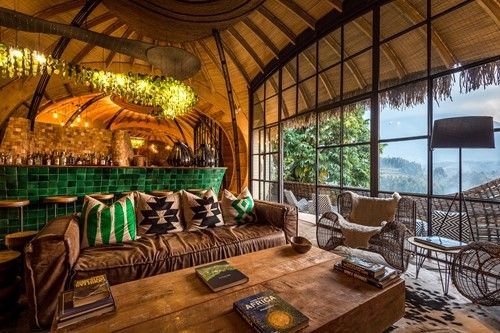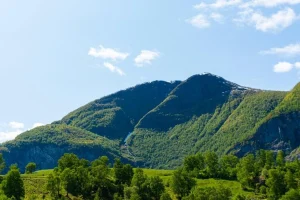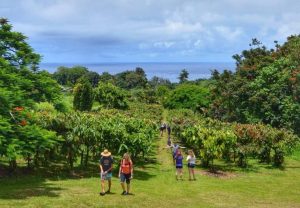Rwanda, known as the “Land of a Thousand Hills,” offers breathtaking landscapes, diverse wildlife, and rich cultural traditions. Beyond its national parks and capital city, one of the most authentic ways to discover Rwanda is through a village homestay. Staying with a Rwandan family in a rural community allows travelers to experience local life, learn traditional practices, and connect deeply with the country’s heritage. This guide explains everything about Rwandan homestays, from activities to costs, while answering the most common questions people ask. How to Experience a Rwandan Village Homestay
What is a Rwandan village homestay?
A Rwandan village homestay is an immersive cultural experience where visitors live with a local family in a rural community. Unlike hotels or lodges, a homestay offers the chance to share daily life with hosts, join in their routines, and learn firsthand about Rwandan traditions. Guests usually stay in simple accommodations within the family home or in a nearby guesthouse arranged by the community. Meals are shared, conversations flow naturally, and travelers gain a deeper understanding of Rwanda’s rural lifestyle. How to Experience a Rwandan Village Homestay
Where can I do a village homestay in Rwanda?
Rwanda offers several regions that host organized village homestays:
- Musanze District: Near Volcanoes National Park, popular with travelers who combine gorilla trekking with cultural tourism. Villages in this area offer homestays that include activities such as basket weaving and farming.
- Huye (Butare) District: Known as Rwanda’s cultural capital, offering homestays connected to local museums, traditional music, and farming communities.
- Lake Kivu Region: Villages around Gisenyi, Kibuye, and Cyangugu provide homestays with stunning lake views and fishing activities.
- Eastern Province: Communities near Akagera National Park offer homestays that focus on traditional cattle herding and village life.
Each region offers a different cultural emphasis, but all provide authentic experiences that allow guests to connect directly with Rwandan families.
What activities are included in a Rwandan village homestay?
Village homestays in Rwanda include hands-on activities designed to showcase local culture and daily life. Common activities include:
- Farming: Joining families in planting, harvesting, or weeding crops like beans, maize, bananas, or sweet potatoes.
- Cooking: Learning to prepare traditional meals such as ugali, ibirayi (potatoes), and isombe (cassava leaves with peanut sauce).
- Milking cows: In cattle-keeping communities, visitors may help with morning or evening milking.
- Craft-making: Trying basket weaving, pottery, or beadwork, often guided by local women’s cooperatives.
- Traditional dance and music: Participating in cultural performances and learning moves from the famous Intore dance.
- Community events: Attending ceremonies, church gatherings, or storytelling evenings around the fire.
These activities vary depending on the village, but they all provide authentic engagement with Rwandan culture.
How much does a village homestay in Rwanda cost?
The cost of a village homestay in Rwanda depends on the region and the level of organization. On average:
- Basic homestays: $20–$40 per night, including meals and accommodation.
- Community-based tourism programs: $50–$100 per night, often including guided activities, performances, and village tours.
- Premium cultural experiences: $100+ per night, sometimes organized through tour operators with added services such as transport.
Most homestays are affordable and designed to benefit the local community directly, with a portion of fees supporting families and village projects.
What should I expect from a Rwandan homestay experience?
A homestay in Rwanda is simple and authentic. Visitors should expect:
- Accommodation: Clean but basic rooms, sometimes with shared facilities. Do not expect luxury, but expect comfort and warm hospitality.
- Meals: Traditional dishes prepared with locally grown ingredients, often vegetarian-heavy with beans, maize, cassava, and fresh vegetables.
- Interaction: Daily conversations with hosts, though English or French may be limited. Some families speak only Kinyarwanda, so translation support may be arranged.
- Rural lifestyle: Early mornings, farming tasks, and participation in family routines.
- Hospitality: Rwandan families are known for their warmth and generosity, often making guests feel like part of the household.
How do I book a homestay in Rwanda?
Booking a village homestay in Rwanda can be done in several ways:
- Community tourism cooperatives: Many villages run official homestay programs that can be contacted directly.
- Tour operators: Local travel agencies often include homestays in cultural tour packages.
- Hotels and guesthouses: Some establishments in Musanze, Huye, or Lake Kivu can arrange homestays with nearby families.
- Online platforms: Websites focusing on sustainable tourism sometimes list Rwandan homestays.
It is recommended to book in advance, especially during peak travel months, to ensure availability.
What is daily life like in a Rwandan village?
Daily life in a Rwandan village revolves around farming, family, and community. Most families wake early to tend to crops or livestock. Children attend school, while adults balance farming with small-scale trading or crafts. Community gatherings, church services, and cooperative work groups are central to village life. The pace is slower than in cities, but life is structured around hard work, strong family ties, and respect for traditions. Visitors who participate in daily routines quickly appreciate the resilience and unity of rural communities.
Is a Rwandan village homestay safe for tourists?
Yes, Rwandan village homestays are safe for tourists. Rwanda is recognized as one of the safest countries in Africa, with low crime rates and strong community values. Villages are welcoming to visitors, and hosts prioritize guest comfort and security. Travelers should take normal precautions such as safeguarding valuables, carrying a copy of identification, and following local guidance. Most homestays are organized through community tourism groups, which ensures reliability and safety.
What language is spoken in Rwandan homestays?
The primary language spoken in Rwandan villages is Kinyarwanda. Some hosts also speak French or English, particularly in areas near major tourist destinations. Travelers may benefit from learning basic Kinyarwanda greetings, which locals always appreciate. In some organized homestay programs, translators or guides assist visitors in communication.
What should I pack for a homestay in Rwanda?
Packing for a Rwandan homestay should focus on comfort and practicality. Essential items include:
- Lightweight, modest clothing suitable for rural settings.
- Comfortable walking shoes for farm work and village activities.
- A reusable water bottle and water purification tablets.
- Insect repellent and mosquito net (if not provided).
- Personal toiletries and basic medical supplies.
- A small gift for the host family (optional but appreciated, such as school supplies for children).
Packing appropriately ensures both comfort and cultural respect during the stay.
How do village homestays in Rwanda support local communities?
Village homestays directly benefit local communities by creating income opportunities and preserving cultural traditions. The fees paid by guests usually go toward the host family and community projects, such as schools, cooperatives, or infrastructure improvements. In addition, homestays empower women by supporting craft-making and household-led businesses. By choosing a homestay, travelers contribute to sustainable tourism that strengthens Rwanda’s rural economy.
What food is served in a Rwandan homestay?
Meals in a Rwandan homestay typically feature locally grown, organic ingredients. Common dishes include:
- Ugali: A staple porridge made from maize flour.
- Ibirayi: Potatoes, often boiled or fried.
- Isombe: Cassava leaves cooked with peanut sauce.
- Beans and peas: A key protein source in Rwandan diets.
- Bananas and plantains: Served boiled, fried, or grilled.
- Fresh fruit: Pineapples, avocados, and passion fruits are often included.
Meals are simple but filling, and they reflect Rwanda’s agricultural traditions. Guests often join in preparing food, making dining a cultural exchange experience.
What cultural traditions can I learn during a village homestay?
A homestay introduces visitors to Rwanda’s living traditions. Guests may learn:
- Basket weaving (Agaseke baskets): A traditional art form symbolizing peace and unity.
- Traditional music and dance: Especially the Intore warrior dance, famous for its energy and storytelling.
- Storytelling and proverbs: Oral traditions are central to passing down history and moral lessons.
- Cattle culture: In some communities, learning the importance of cows in Rwandan society.
These traditions highlight Rwanda’s deep cultural heritage and provide memorable learning experiences for visitors.
Are Rwandan homestays suitable for families or solo travelers?
Yes, Rwandan homestays are suitable for both families and solo travelers. Families often enjoy the interactive activities such as farming and crafts, while solo travelers benefit from the close connection with host families. Children are usually welcomed warmly in villages, and many communities adapt activities to suit younger guests. Solo travelers often find that homestays provide a sense of belonging and safety.
What is the best time of year for a homestay in Rwanda?
The best time for a Rwandan homestay is during the dry seasons, from June to September and December to February. These months have pleasant weather, making it easier to participate in farming, outdoor activities, and village walks. The rainy seasons (March–May and October–November) bring lush green landscapes but can make travel to rural villages more difficult. Homestays operate year-round, but visitors should plan according to comfort and accessibility.
Final Thoughts
A Rwandan village homestay offers one of the most enriching cultural experiences in East Africa. By living with a host family, travelers gain insight into daily life, traditions, and values that define Rwanda’s rural communities. From farming and cooking to dance and storytelling, homestays provide hands-on activities that leave lasting memories. More importantly, they support sustainable tourism by empowering families and preserving cultural heritage. For travelers seeking authenticity, a Rwandan village homestay is a meaningful way to connect with the country beyond its landscapes and wildlife. How to Experience a Rwandan Village Homestay




